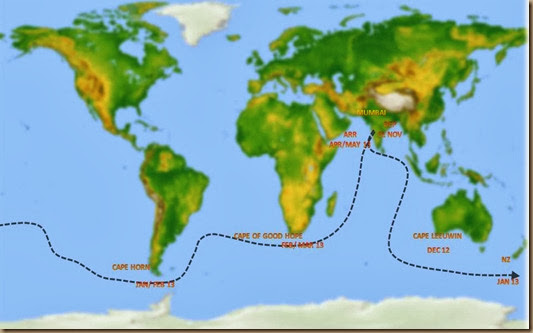
“What route would you be following?” is one of the most often asked questions and ideally I should have it included in the FAQs. But there was so much of writing to be done that I thought it needed an entire post to itself.
Whenever I have provided an explanation to the route most of the responses I got went something like this:-
- you don’t seem to be touching all the oceans
- but you are not going anywhere along the northern hemisphere
- you are just going around the Antarctic and that looks like a very quick way of circumnavigating
Let me explain.
Circumnavigation of the globe simply means to go around the globe. Since this one is under sail, I am not allowed to use engine except in case of emergency. The canals are, therefore, out. So is the northern hemisphere because it is landlocked, in a manner of speaking.
In the south though, there is a continuous linkage between the oceans, which is navigable round the year. Due to its being unprotected, the sea continuously builds up and has given rise to the famous sailor’s adage- there are no rules south of 40 S, no laws south of 50 S and no god south of 60 S.
Sailors have generally agreed set of rules for a nautical circumnavigation. To paraphrase some of the important points include:-
- Start and finish in the same port
- Cross all longitudes in the same direction
- No use of propulsion other than wind and sea
- Cover a distance equal to 21600 miles (length of the Equator)
- Take no assistance enroute (sea can be harvested though)
- Cross the equator twice
- Start from a point no further south of 40 deg S lat
- Sail south of all the Great Capes: Leeuwin, Cape Horn and Cape of Good Hope
That doesn’t leave me with much choice and automatically excludes a lot of possible (and easy) routes, chief among them being a circumnavigation along the equator and through canals.
Possibly the only choice I have is to head East or West once I am out of doldrums. That isn’t really a choice if you were familiar with the weather systems in that area.
No comments:
Post a Comment